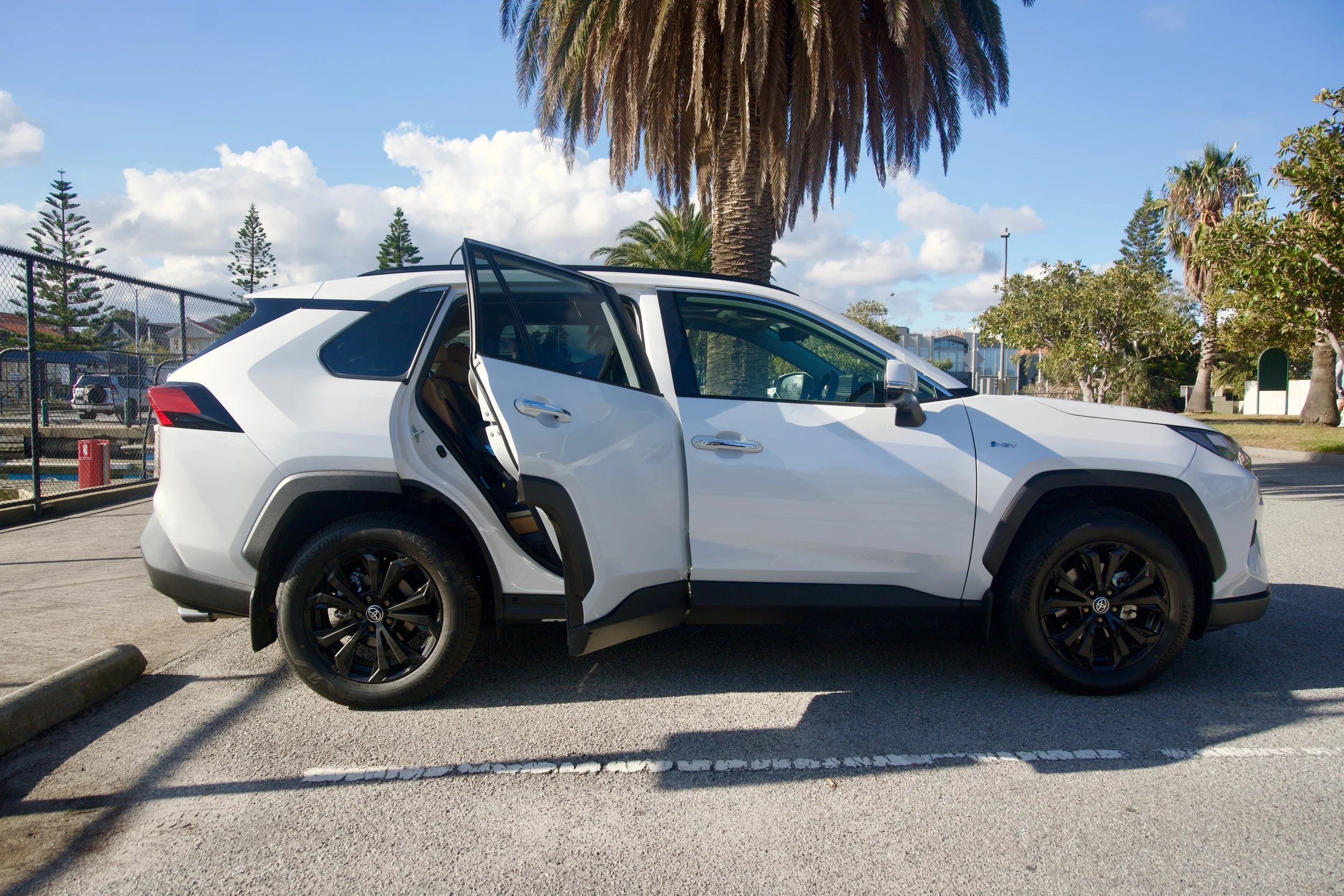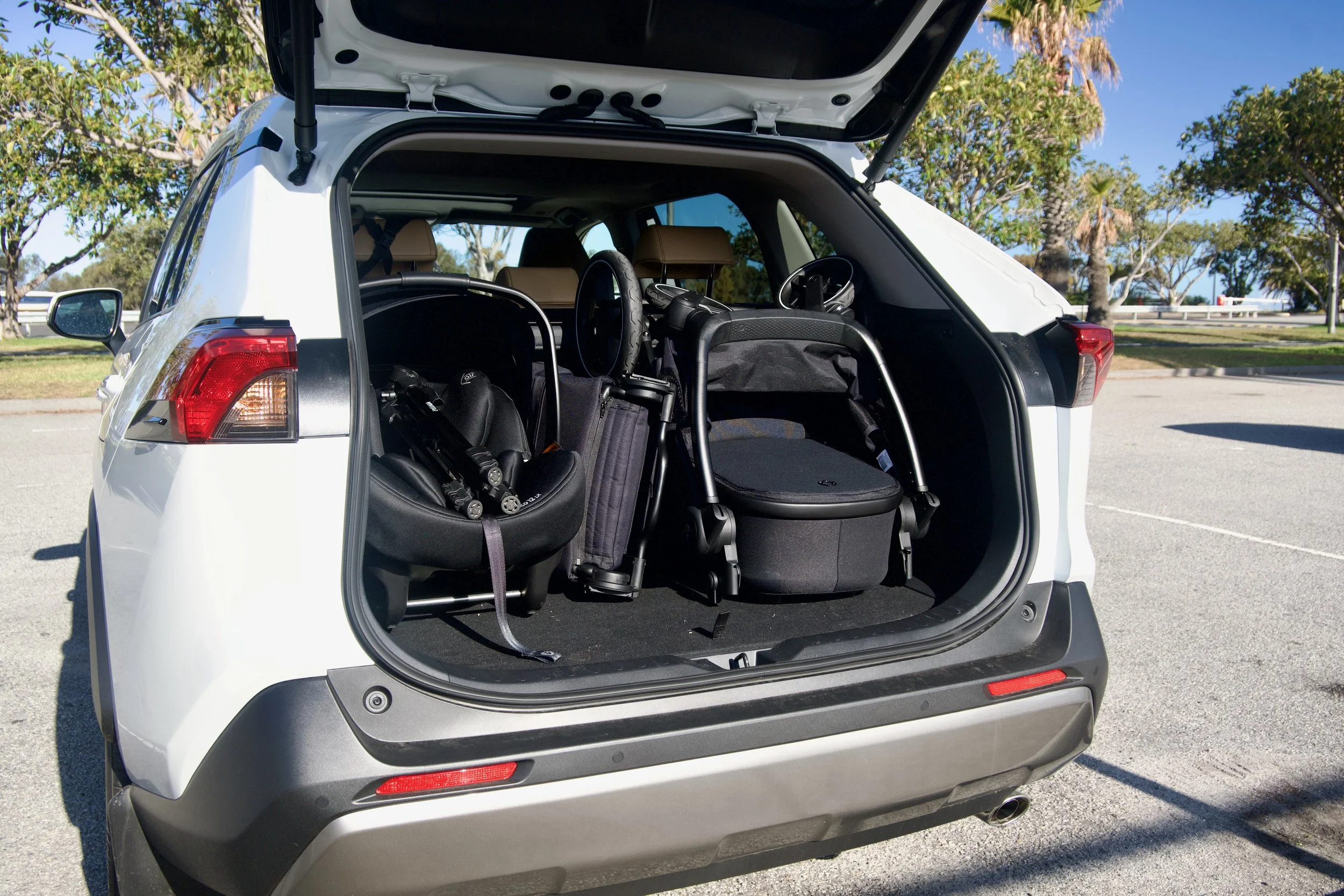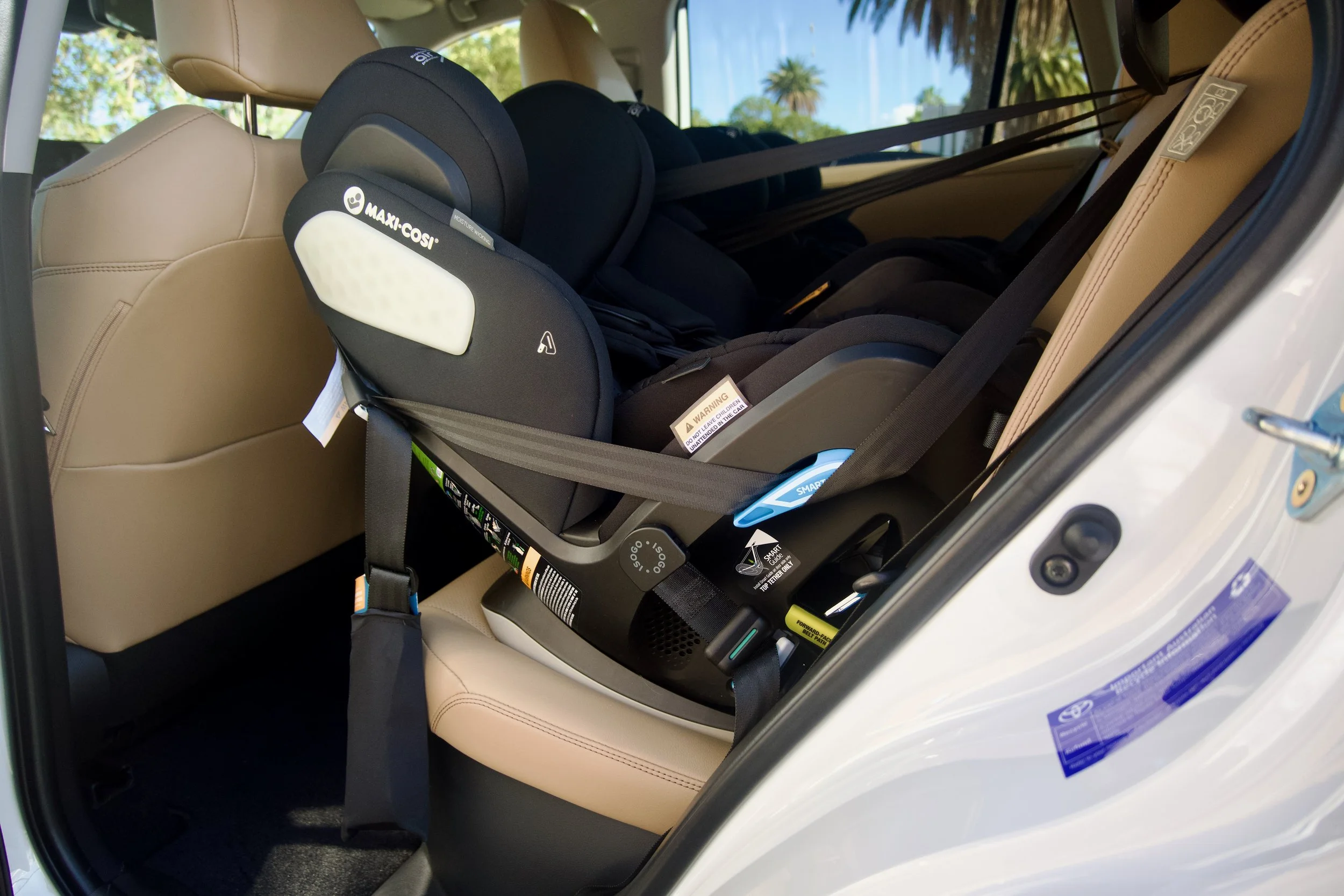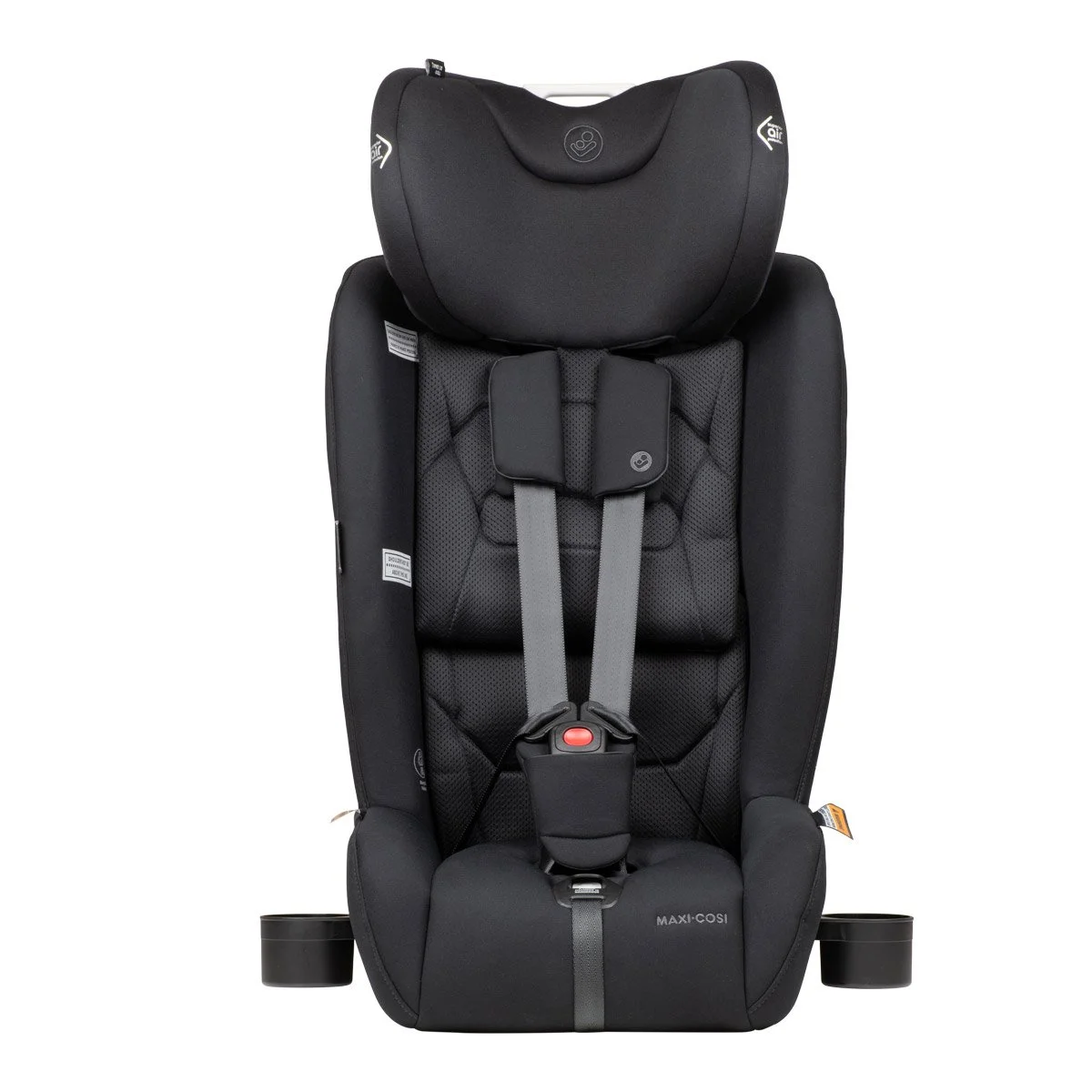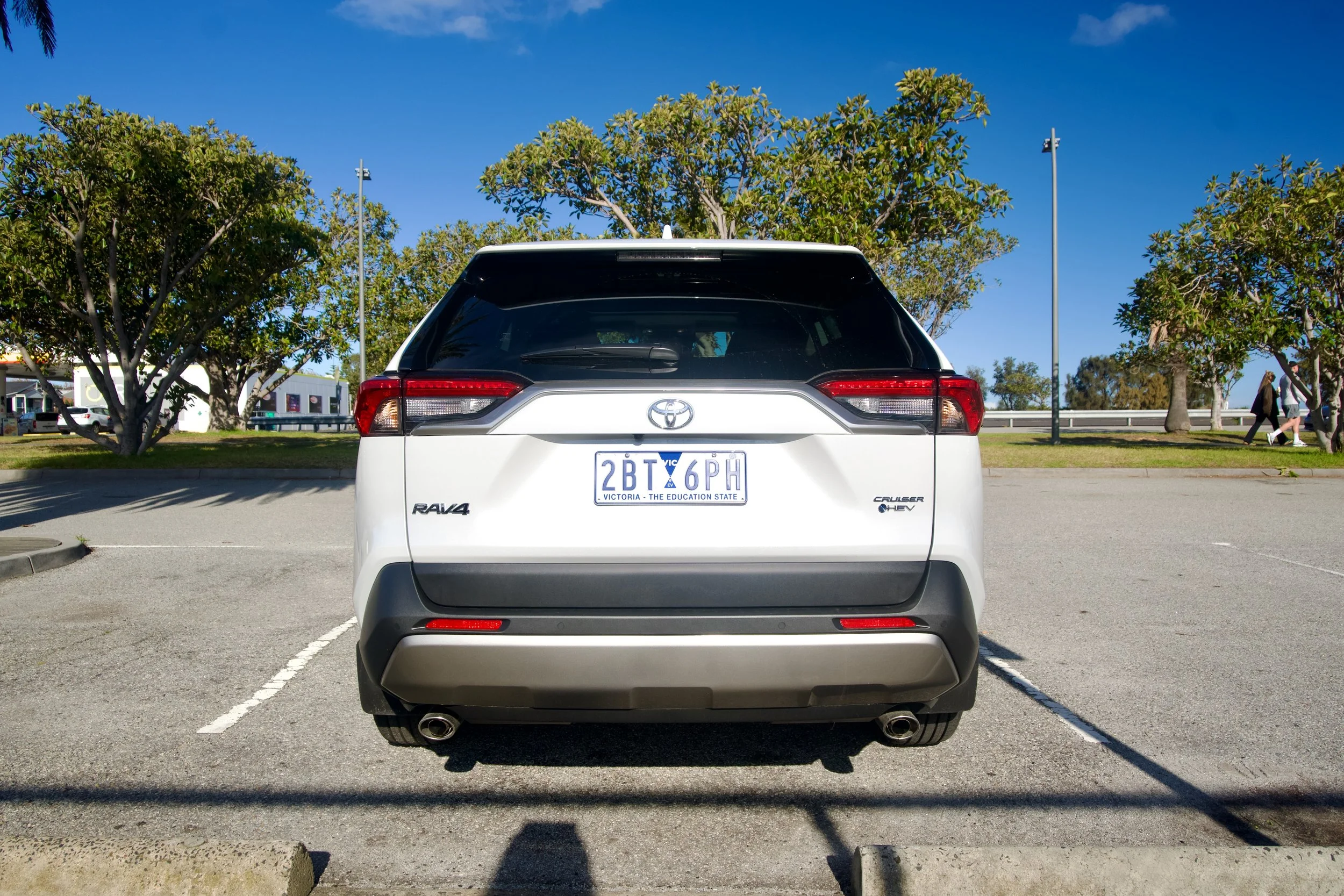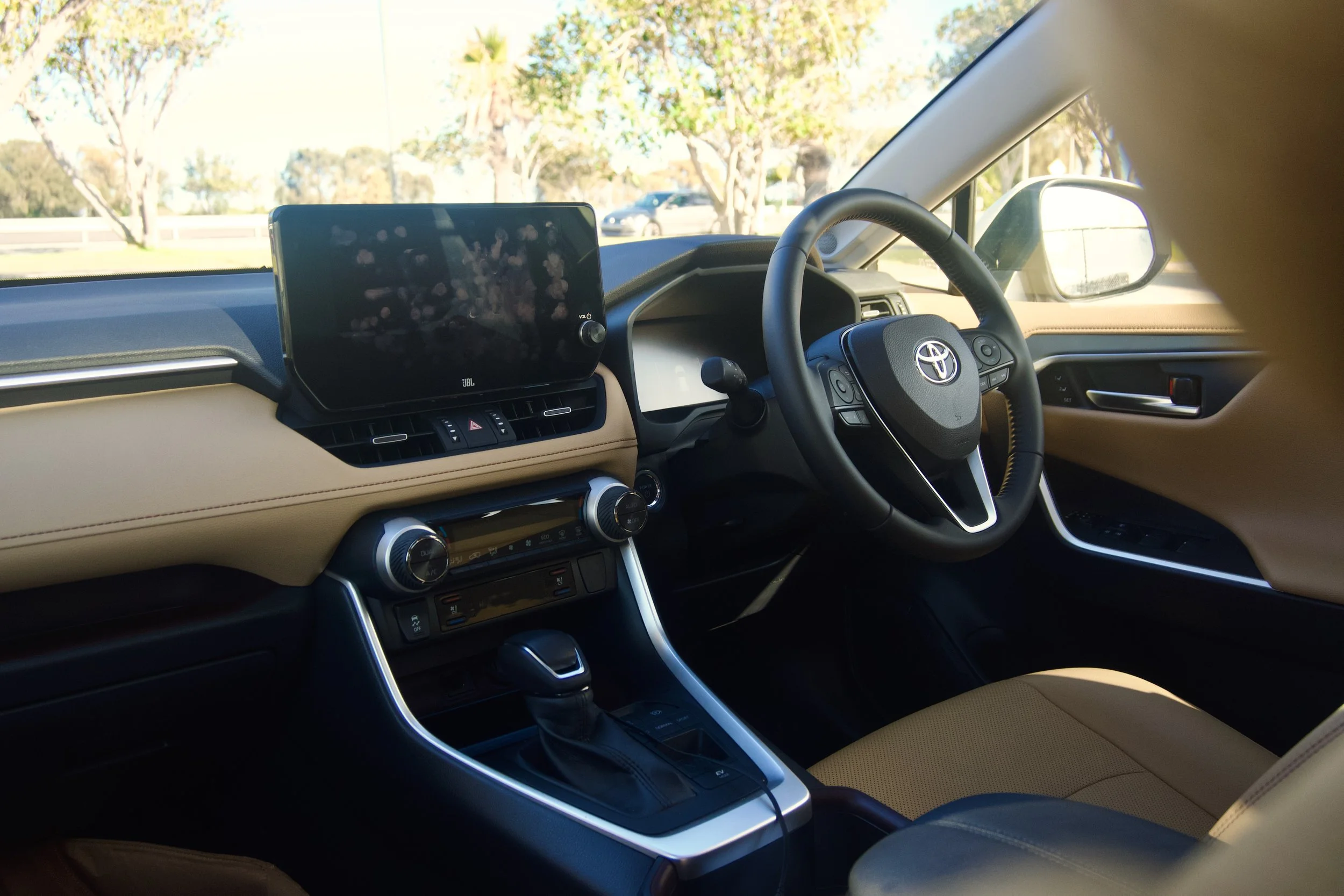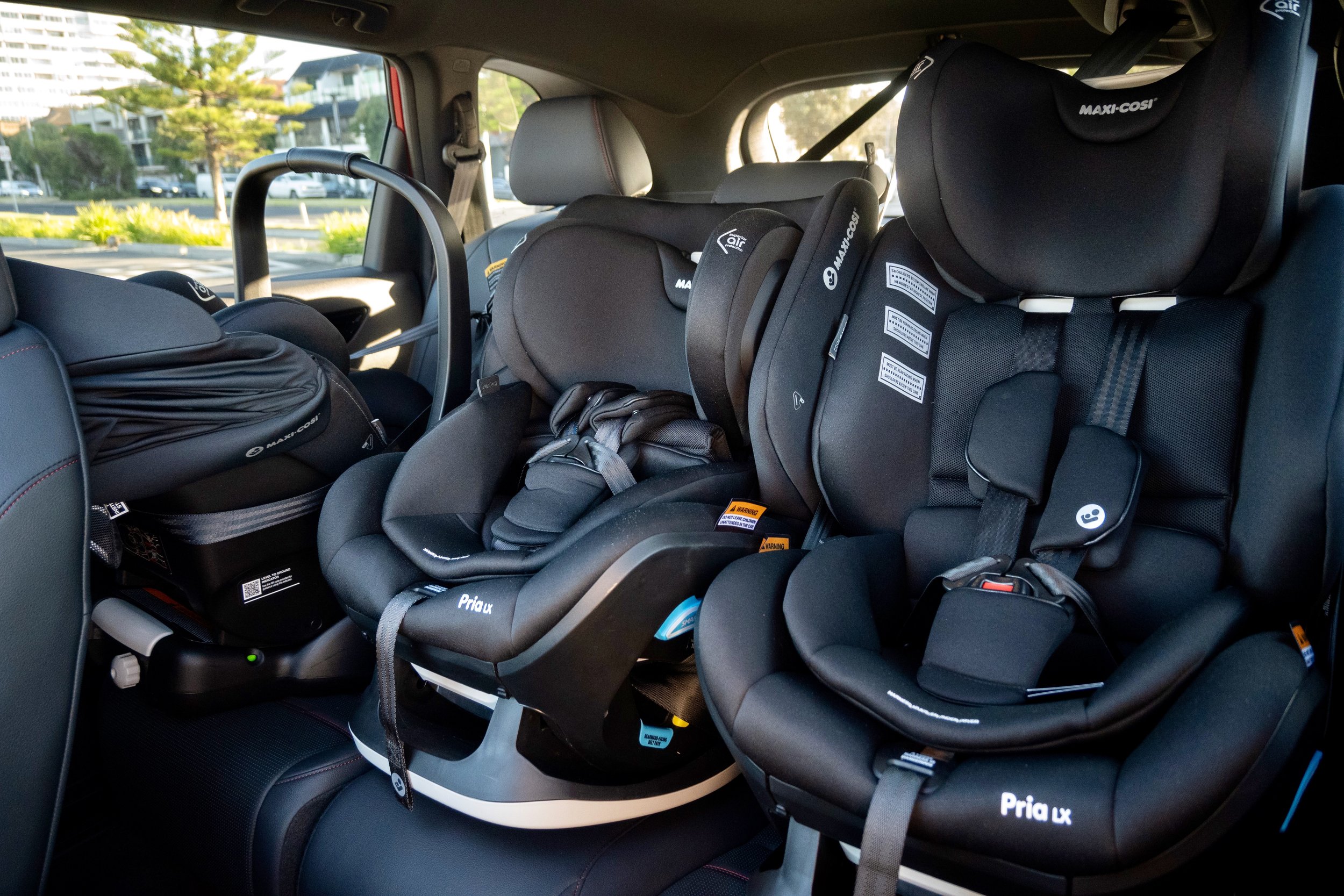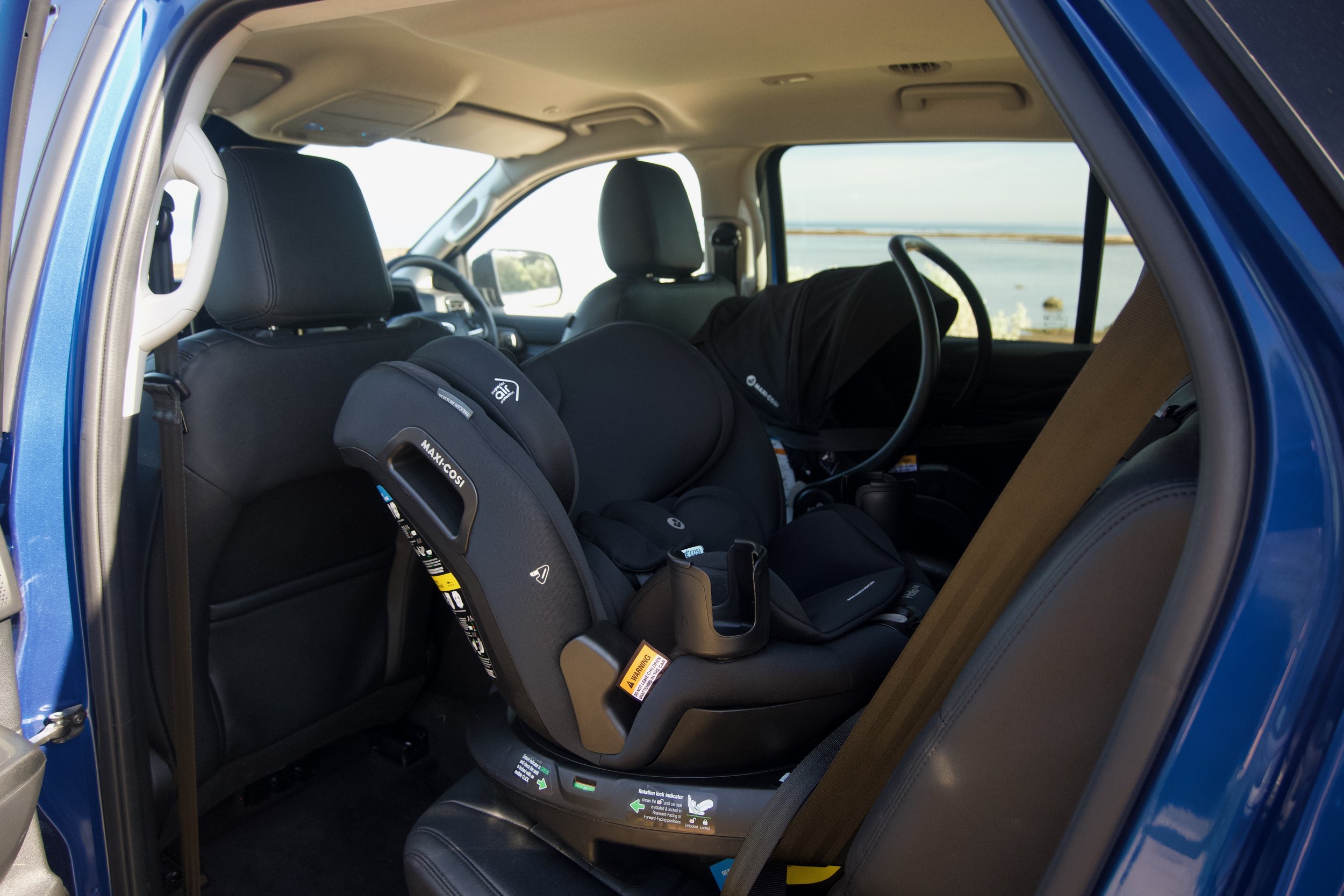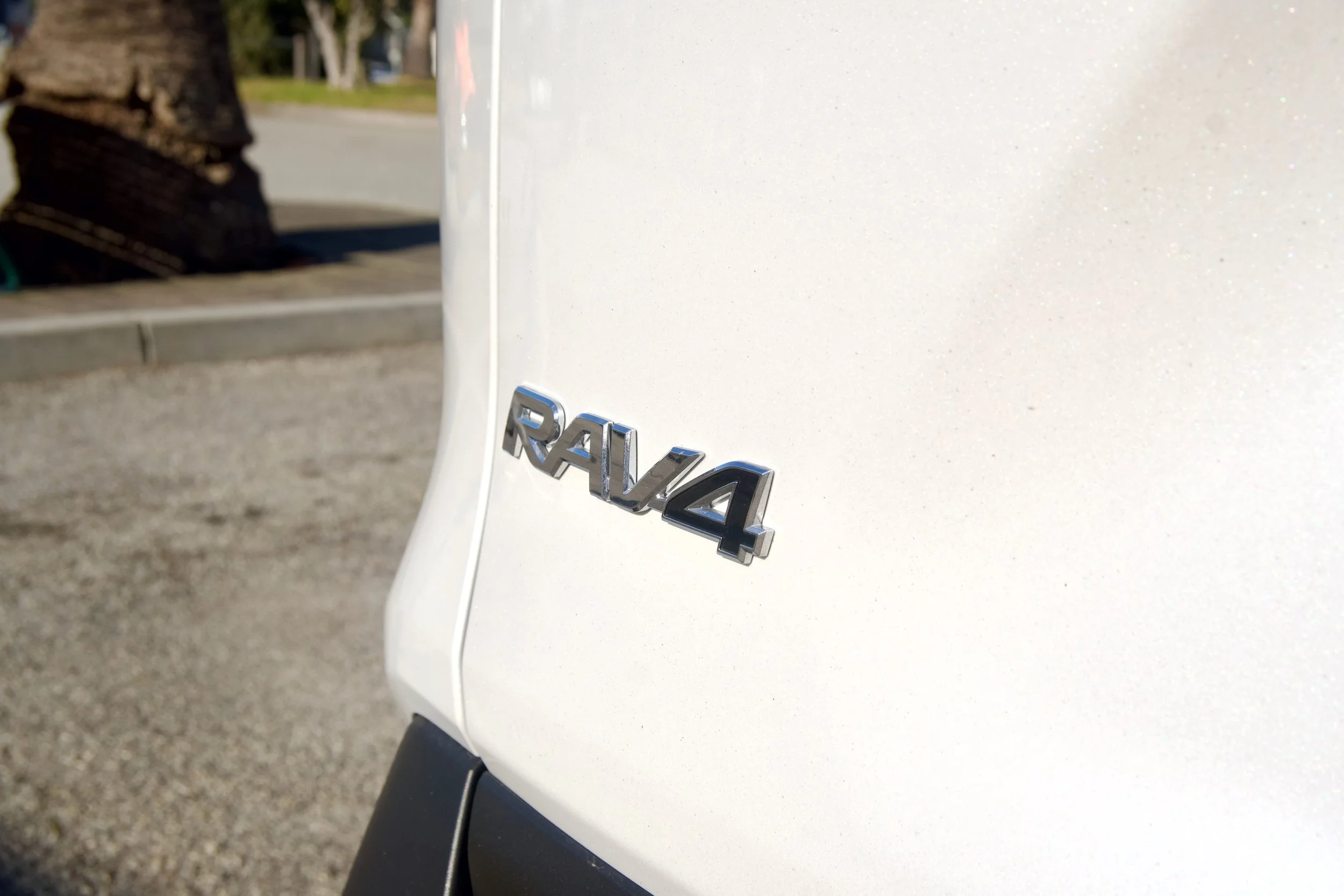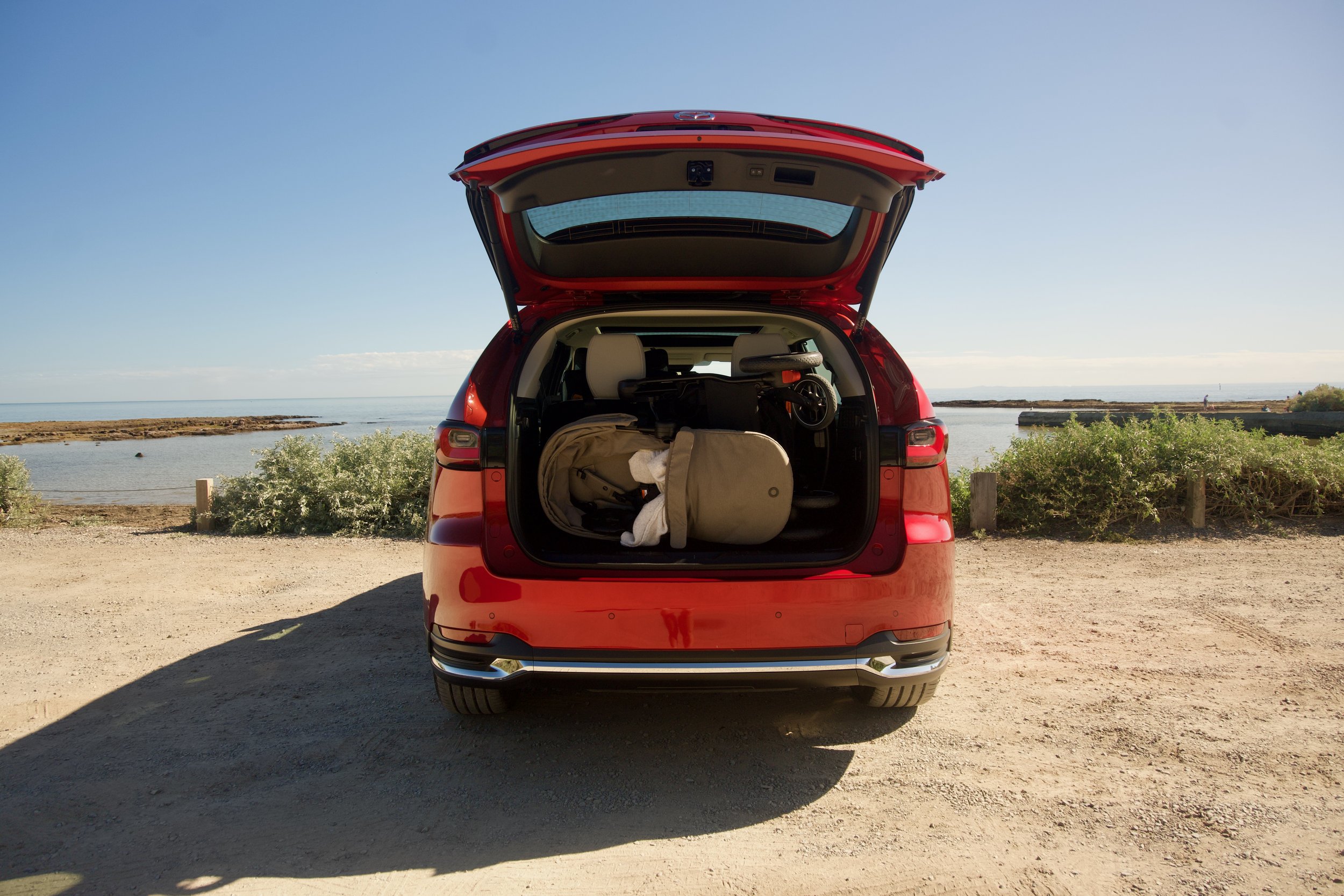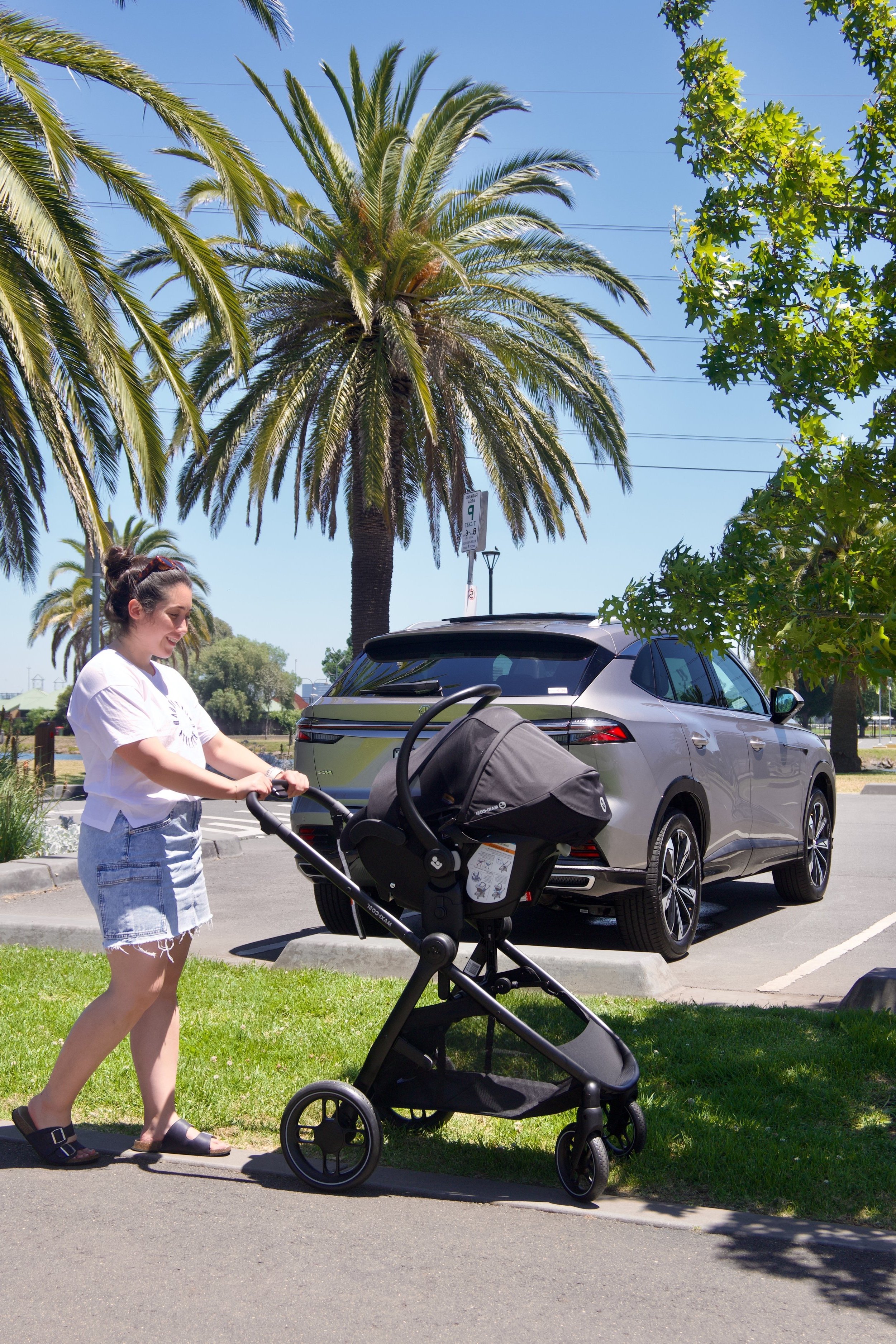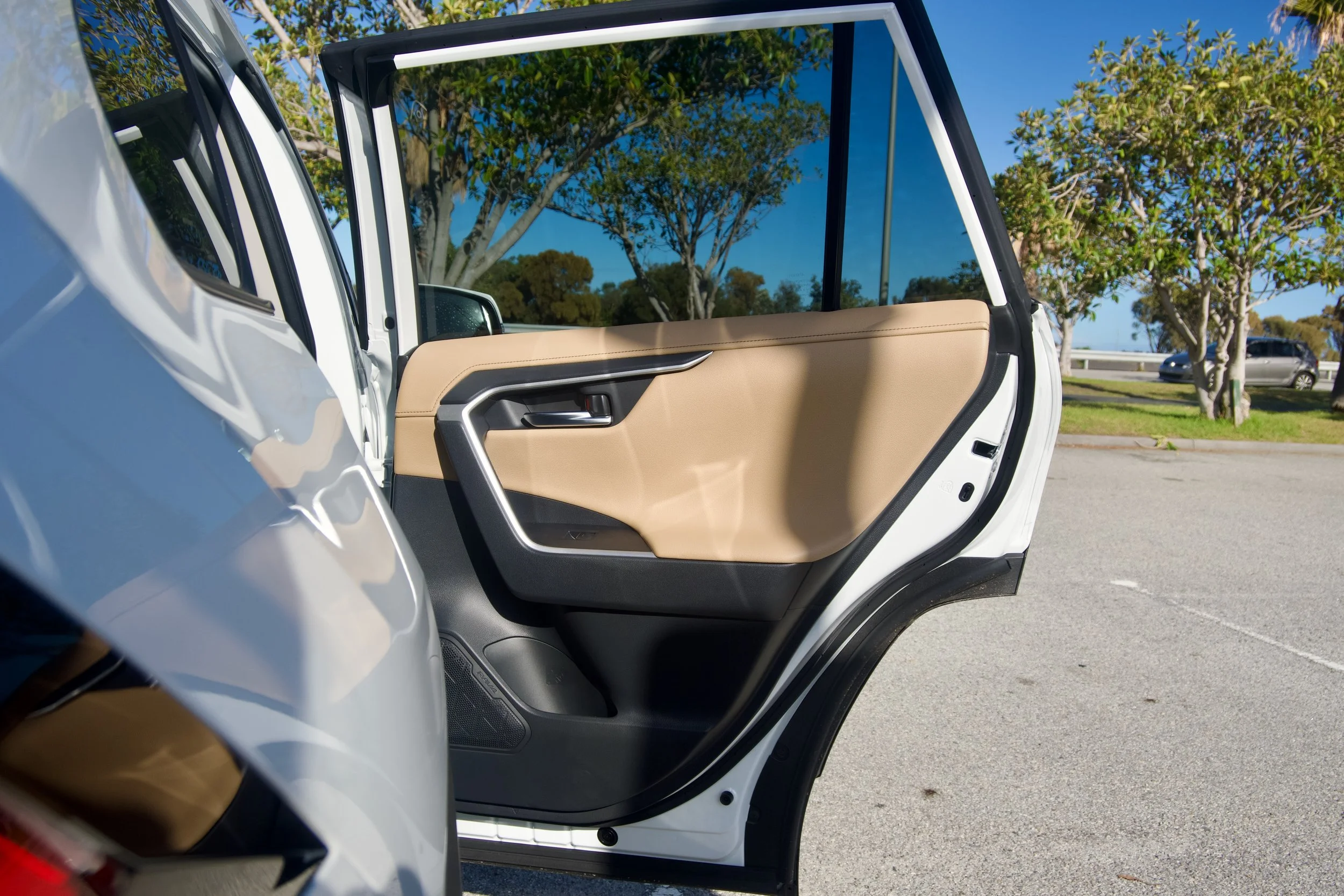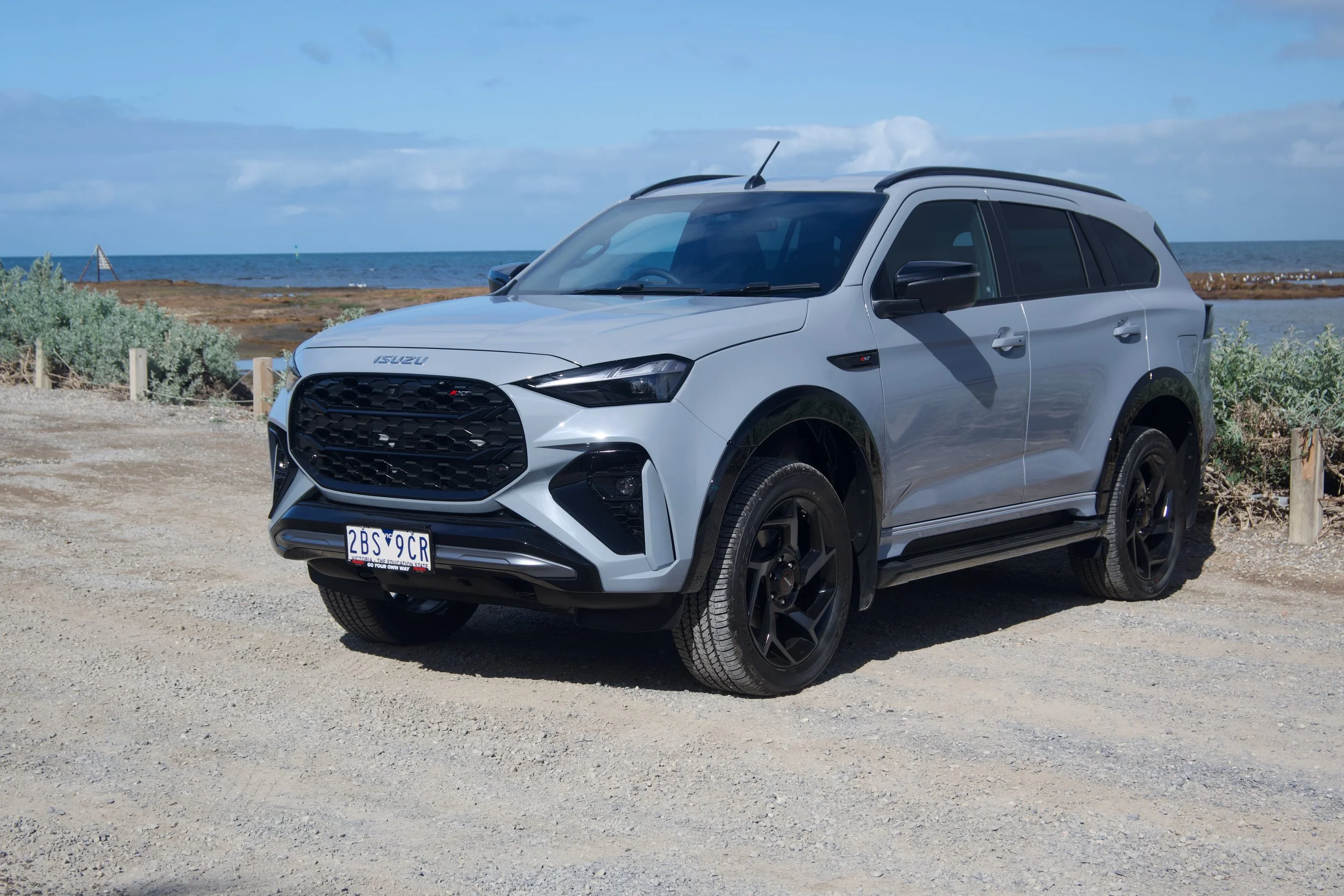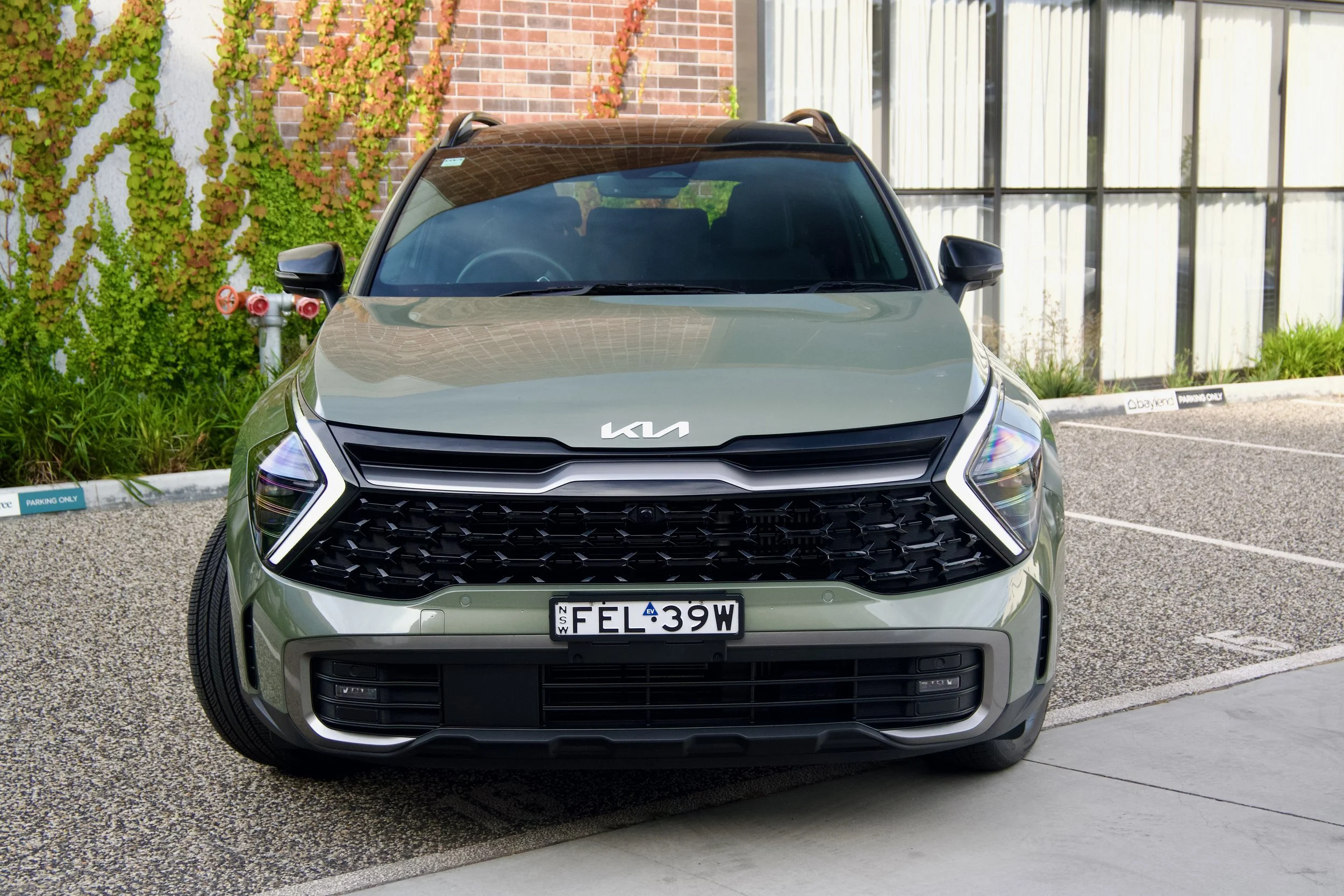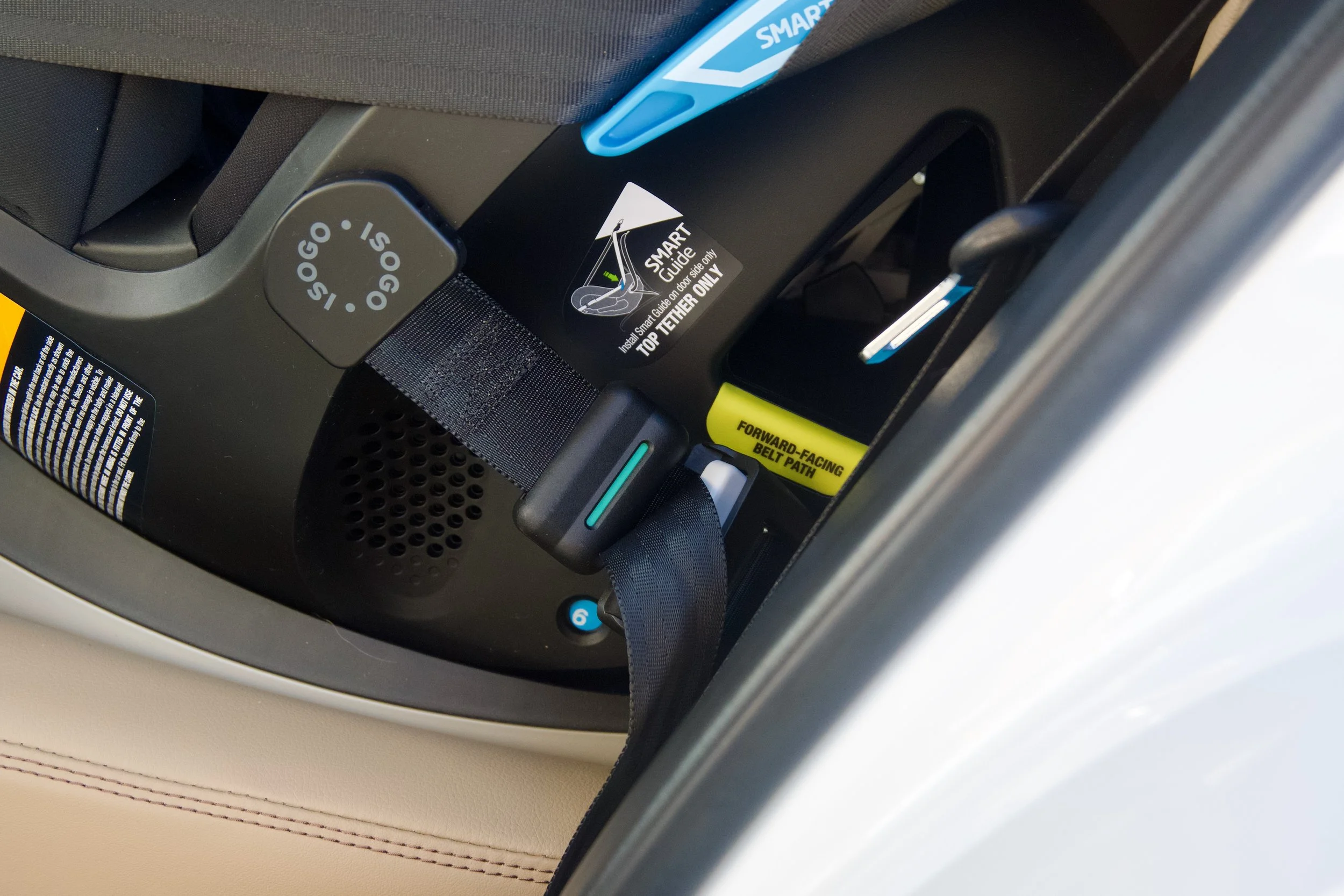2025 Toyota RAV4 family review: is it the efficient, practical, reliable SUV we’ve all been looking for?
According to the June 2025 VFACTs report, the Toyota RAV4 remains one of the most popular vehicles in Australia, ranking as the top-selling SUV and hybrid model in the country for the first half of 2025. With a full switch to hybrid powertrains across Toyota Australia’s passenger range, the RAV4 comes exclusively with a 2.5L petrol hybrid system, available in either 2WD and AWD.
We tested the 2025 Toyota RAV4 Cruiser Hybrid 2WD, currently priced at $51,410 before on-road costs, to see how it fits into everyday family life. This variant sits one step down for the top-spec Edge but includes features like wireless Apple CarPlay and Android Auto, keyless entry and start, rear air vents, a panoramic sunroof and a power tailgate as standard.
Toyota Australia claims the official combined fuel use is 4.7L/100km for the 2WD hybrid, we averaged a little higher than this. The boot offers 580L of space, and in our testing, we walked away impressed with how far that gets you once you add a pram, the weekly shopping and whatever toys and family junk you carry around after a long period of time.
In this review, we’ll cover what the RAV4 is like to live with day-to-day, how it stacks up on practicality and safety, and whether it remains one of the best SUVs for families in Australia heading into the second half of 2025.
Did you know Baby and Car uses a trusted network of dealerships Australia-wide to find you the best price for your next brand new car? With tailored Australian-based support, enquire today. Find out more here.
Toyota RAV4 Pros & Cons: What you should know before buying
Pros:
Low real-world fuel use: Averaged 5.7L/100km in mixed driving—still more efficient than most petrol SUVs in this size.
Spacious rear seat setup: Can accommodate three rear-facing compact child seats
Large, practical boot: 580L capacity with a flat floor; fits a pram with room to spare.
Comprehensive safety tech as standard: Includes emergency braking, adaptive cruise, lane assist, and blind spot monitoring.
Family-friendly cabin features: Rear air vents, multiple USB ports, and easy-clean surfaces thanks to leather upholstery.
Wireless smartphone connectivity: Apple CarPlay and Android Auto come standard in Cruiser and above. Wireless charging also available.
Hybrid-only range: All models use Toyota’s hybrid system, helping reduce running costs.
Cons:
Higher real-world fuel use than official figures: Averaged 5.7L/100km in testing (official is 4.7L/100km).
Long wait times likely: Ongoing demand means you may need to wait several months, depending on the spec.
No petrol or diesel-only option: Hybrid is the only powertrain available.
Not the most “affordable” 5-seater SUV on the market: At $51,410 before on-road costs, the Cruiser Hybrid 2WD pushes into premium territory.
Passenger doors don’t open 90 degree angle: The two rear doors don’t open as wide as competitors like Mazda CX-5/CX-60.
Need a car seat installed? We’re here to help…
Toyota RAV4 price guide – How much does the 2025 Toyota RAV4 cost?
The Toyota RAV4 is available in five trim levels, and two drivetrain options: 2WD and AWD, pricing as follows:
2025 Toyota RAV4 hybrid GX 2WD: $42,260 before on-road costs
2025 Toyota RAV4 hybrid GX AWD: $45,260 before on-road costs
2025 Toyota RAV4 hybrid GXL 2WD: $45,810 before on-road costs
2025 Toyota RAV4 hybrid GXL AWD: $48,810 before on-road costs
2025 Toyota RAV4 hybrid XSE 2WD: $48,910 before on-road costs
2025 Toyota RAV4 hybrid XSE AWD: $51,910 before on-road costs
2025 Toyota RAV4 hybrid Cruiser 2WD: $51,410 before on-road costs
2025 Toyota RAV4 hybrid Cruiser AWD: $54,410 before on-road costs
2025 Toyota RAV4 hybrid Edge AWD: $58,360 before on-road costs
(Exact driveway pricing will vary depending on location and registration type; check with Toyota Australia or your local dealership for up-to-date costs.)
Want to save money? Baby and Car uses a trusted network of dealerships Australia-wide to find you the best price for your next brand new car. With tailored Australian-based support, it’s free to get a quote. Find out more here.
Toyota RAV4 engine options: Petrol hybrid
The 2025 Toyota RAV4 comes with one engine but two drivetrain options:
2WD: 2.5L 4-cylinder hybrid petrol - 160kW of combined power & 221 Nm of torque from the petrol engine.
AWD: 2.5L 4-cylinder hybrid petrol - 163kW of combined power & 221 Nm of torque from the petrol engine.
It's a self-charging hybrid that switches automatically between electric and petrol power depending on how and where you’re driving. It also means you never have to charge it externally.
Most of our testing was in stop-start city traffic, with one to two freeway trips mixed in. The RAV4 consistently started in EV mode, which meant there was no engine noise when pressing the power button—ideal if you’ve got kids asleep in the car or leaving early in the morning. There’s also a selectable EV-only mode, which prioritises electric power. It’s worth mentioning the EV mode will usually power the vehicle at low speeds where conditions allow.
Acceleration from a standstill was smooth, with no noticeable lag. In regular driving, the switch between electric and petrol was seamless—you’ll hear the engine turn on, but you don’t feel it through the pedals or steering. Unless you're looking directly at the energy monitor on the instrument cluster, the transition is almost unnoticeable.
On the road, the RAV4 Cruiser Hybrid is quiet and refined. Engine noise is well contained, and even on the freeway, the cabin remains calm and composed. If you’ve driven a Toyota hybrid previously you’ll feel quite at home.
There were no issues with the CVT. It handled low-speed parking and reversing smoothly. A nice bonus for fuel-conscious drivers is Toyota’s real-time eco feedback system, which gives you live ratings on your acceleration, braking, and driving behaviour to help you optimise efficiency.
Compared to the Honda CR-V e:HEV, the RAV4’s hybrid system feels just as refined—if not slightly smoother in the way it handles stop-start conditions and highway driving. The tech inside the cabin, however, is fairly simple. While you get the basics, the infotainment system isn’t as feature packed as current Hyundai or Kia models.
With three rear-facing Maxi Cosi Pria child seats installed and a Maxi Cosi Oxford pram plus gear in the boot, the RAV4 still felt comfortable and capable. Power delivery didn’t suffer under load, and it handled hills and freeway merges without issue.
While the second row does fit three across, it may be a tighter squeeze with larger baby capsules. For most families with one or two young kids—or those using a mix of rear- and forward-facing seats—it will be a practical fit depending on your seat configuration. The Toyota RAV4 could also serve as a stepping stone before moving to a larger seven-seat SUV.
For some buyers, Toyota’s decision to go hybrid-only might feel restrictive, but for most families, it won’t be a dealbreaker. Toyota’s hybrid technology has been a core part of its lineup for decades. For families looking to reduce running costs without jumping into a full EV just yet, the RAV4 Hybrid offers a familiar, low-effort way to make that transition.
Check out other Baby and Car content:
Is the Toyota RAV4 fuel-efficient?
Fuel consumption figures are as follows:
Petrol hybrid: 4.5L/100km (combined), our figure 5.7L/100km.
Toyota lists official combined fuel use at 4.7L/100km for this model. In real-world driving, we averaged 5.7L/100km, which is still great for a mid-sized SUV carrying full family gear. Most of the electric-only driving happened in low-speed traffic, with the petrol engine kicking in more consistently at higher speeds. Compared to petrol-only alternatives, the fuel savings add up—especially with rising fuel prices.
Toyota RAV4 Interior & Space: How practical is it for families?
The Toyota RAV4’s interior is functional and generally basic, with a focus on practicality over visual wow-factor. The Cruiser Hybrid 2WD variant we tested includes beige leather-accented seats, 10-way power driver’s seat with lumbar support, keyless entry and start, and a power tailgate—features that genuinely help day-to-day. There's also a sunroofin this trim, which does add a sense of openness and light to the cabin.
In the second row, we were able to install three rear-facing Maxi Cosi Pria LX seats across the bench. There are two ISOFIX points on the outboard seats and three top tether points, all clearly marked in the middle of the respective seat backs. Installing seats was straightforward. That said, the rear doors don’t open to a full 90 degrees—which is common, but it does make loading a capsule-style seat slightly more awkward, especially if your little one is sleeping. A wider opening would be a welcome change, especially for parents still in the baby capsule stage. It’s worth noting competitors like the Mazda range have a 90-degree wide door opening.
The second row can recline, but it doesn’t slide forward or back. While that doesn’t impact comfort too much for kids, it does limit flexibility if you need to balance legroom with boot space. If fitting a rear-facing seat behind the front passenger is required, depending on the size of the child and seat, that front passenger seat will need to be moved forward—so taller adults may need to adjust their driving position slightly if using bulky child seats or have your children extended rear-facing.
The boot capacity is 580L. With the Maxi Cosi Oxford pram and Oria bassinet inside, there was still space for four to five shopping bags. The boot height sits around knee level (at 5’3), which makes loading prams and heavier items fairly easy. The power tailgate was also useful when juggling kids or groceries—responsive and reliable in our testing. It is also height adjustable so shorter owners can set this to their preferred height.
Cabin storage is adequate. There are seat-back pockets, door bottle holders, a covered centre console, and cupholders in the centre console front and rear. Nothing overly clever, but enough for day-to-day use. In the front row, there’s a wireless phone charger, 3x USB-C ports and clear, accessible controls. The 10.5" touchscreen is a good size on paper, but it doesn’t feel as expansive as what you’ll find in rivals like the Kia Sportage or Hyundai Tucson. It gets the job done, with wireless Apple CarPlay and Android Auto but if you’re looking for a hyper-tech focused family car, you might fall short on the RAV4.
Interior trims differ depending on the variant. The Cruiser offers a choice of beige or black leather-accented seats. In our test vehicle, the beige option felt a bit dated than expected— it may potentially be harder to keep clean with young kids as well. The black interior is more forgiving and, arguably, more upmarket in appearance.
In terms of family practicality, the RAV4 covers most essentials. Rear air vents are standard across all trims, and second-row comfort is solid for children in boosters or forward-facing seats. Adults in the middle seat may feel squeezed if surrounded by child seats, but for two-kid families or those with occasional rear passengers, it works.
Nothing about the interior felt especially clever or innovative, but that’s not necessarily a bad thing. The RAV4 doesn’t try to reinvent the wheel—it focuses on delivering the basics well, with a layout that’s easy to use, durable quality materials and tech that does the job.
A final little gripe is the Cruiser 2WD doesn’t come with built-in window shades which is an essential for families in 2025.
Maxi Cosi Pria LX car seats shown
Toyota RAV4 Boot Space & Storage: How much can it fit?
With 5 seats up: 580L
Boot space is one of its standout strengths—it’s wide, deep, and sits low to the ground. It makes it easy to lift heavier items like prams, suitcases, or boxes without too much strain. At 5’3, I found the loading height very manageable, and the power tailgate on the XSE, Cruiser and Edge variants made access even easier when hands were full.
We tested the boot using a Maxi-Cosi Oxford pram with Oria bassinet, and there was still room for around 6–8 standard paper shopping bags and a baby bag without needing to reconfigure anything. The boot also features a two-level adjustable floor, allowing you to set it higher for a flatter load lip or lower for maximum volume. There’s also a small side pocket for loose items, and seatback releases to fold the second row from the boot.
With the second row folded flat, the RAV4 opens up considerably. While not as forgiving as a 7- or 8-seater SUV like the Prado or LandCruiser 300 Series, it’s still more than capable for trips to IKEA, bulky gear, or a flat-pack cot. The seats fold in a 60/40 split, and the resulting space is long and relatively flat, though not completely flush.
It’s worth keeping in mind that the RAV4 doesn’t offer a third row—so if you’re after full-size people mover flexibility, you may need to look elsewhere. That said, the RAV4 offers a good balance for families that value SUV ride height and hybrid efficiency without needing extra seating.
Compared to something like the Kia Sportage or Hyundai Tucson, the RAV4’s boot is in the middle of the two size wise, depending on floor configuration. It also holds an advantage for families who regularly pack a lot of gear but don’t want to step up to a full-size SUV.
In the market for a new car? Get one on one support with Baby and Car
Toyota RAV4 Safety Features: Is it a safe family car?
The 2025 Toyota RAV4 comes with a strong suite of active safety and driver assistance features as standard across all variants, including the entry-level GX. Toyota’s Safety Sense package is included range-wide, with additional safety and visibility tech available in higher trims like the Cruiser and Edge.Here’s what’s standard across the entire 2025 RAV4 range:
Toyota Safety Sense (includes):
Lane Departure Alert
Lane Trace Assist
Pre-Collision Safety System with pedestrian and daytime cyclist detection
Intersection Turn Assist
Emergency Steering Assist
Road Sign Assist (speed signs only)
Active Cruise Control (all speed)
Blind Spot Monitor (BSM)
Rear Cross Traffic Alert (RCTA)
Reversing camera with guide lines
Front and rear parking sensors
Seven airbags (including driver’s knee airbag and full-length curtain airbags)
Electronic Stability Control (ESC) and Traction Control
Hill-start Assist Control
Trailer Sway Control
ISOFIX anchor points on outer second-row seats
Three top tether anchor points in the second row
Seatbelt reminder alerts for all seating positions
Tyre Pressure Monitoring System (TPMS)
Auto high beam
Rain-sensing wipers
Additional safety features in Cruiser and Edge variants include:
Panoramic View Monitor (360-degree camera system)
Digital rear-view mirror (Cruiser and above)
Auto-dimming rear-view mirror
Keyless entry and remote engine start
ANCAP safety rating: The Toyota RAV4 currently holds a 5-star ANCAP safety rating (tested in 2019). It’s worth noting Toyota has just revealed the new-generation RAV4 which will need to undergo a fresh round of testing when it arrives in Australia.
In testing, adaptive cruise control was smooth and responsive, without the hesitation or jerky braking that can sometimes happen in city traffic. Lane Trace Assist worked well during freeway driving and was subtle in its steering adjustments—it didn’t feel intrusive.
The panoramic view monitor was helpful in tight spots, although Toyota’s interface limits how much control you have over what you're seeing. You can activate the camera when you’re not in reverse but honestly it doesn’t offer much value, there is no swipe-to-view feature; instead, it shows a pre-set rotating loop around the car. While functional, it’s not as intuitive as systems in competitors like Kia or Hyundai.
The parking sensors were accurate and reliable, and the reversing camera was fine in most conditions, though not the sharpest I’ve seen, it is one of the better options on the market though. Rear visibility in general was good, and fitting ISOFIX child seats was simple thanks to clearly marked and accessible anchor points.
We didn’t trigger the pre-collision system during testing, but lane departure warning, road sign recognition, and blind spot monitoring all worked consistently and without being overly sensitive. Parking and manoeuvring around suburban streets was straightforward, with no significant blind spots or awkward angles.
The digital rear-view mirror is a feature exclusive to upper trims like the Cruiser. While not essential, it’s a personal preference if you use it or not—I will admit it’s particularly useful when the back seats are full of car seats or the boot is packed. The ability to manually adjust the camera angle left, right, up or down makes it more customisable than a standard mirror.
Toyota RAV4 vs Kia Sportage Hybrid vs Hyundai Tucson Hybrid: which one is Best for Families?
Best for Fuel Efficiency:Toyota RAV4 Hybrid (official: 4.7L/100km, tested: 5.7L/100km)
Best for Cargo Space: Hyundai Tucson (up to 620L depending on variant)
Best for Luxury & Comfort: Kia Sportage GT-Line (ventilated seats, premium cabin feel) or Hyundai Tucson N-Line or Highlander model
Best for Towing: Kia Sportage and Hyundai Tucson (1900kg braked)
Most affordable to service: Toyota RAV4 ($240 per service for the first 5 years)
Longest warranty: Kia Sportage (7 years unlimited km)
The Toyota RAV4 Hybrid wins when it comes to fuel efficiency, with an official combined figure of 4.7L/100km (2WD) and a real-world average of 5.7L/100km during testing. Neither the Kia Sportage Hybrid (4.9L/100km) nor the Hyundai Tucson Hybrid (5.4L/100km) matched the RAV4 in day-to-day economy, though all three are efficient for mid-size SUVs.
While the Hyundai Tucson wins on litres with up to 620L of boot space, the RAV4’s boot is still highly usable, fitting a large pram and several bags with ease. The Kia Sportage follows closely behind, and all three offer dual-level boot floors and wide openings for pram loading.
For families wanting a more upmarket interior, the Kia Sportage GT-Line and Hyundai Tucson N-Line or Highlander are the most premium. Both includes ventilated seats, ambient cabin lighting, and a larger curved infotainment display. The RAV4 Cruiser offers leather-accented seats and a sunroof but feels more sensible and uninspiring by comparison.
When it comes to towing, the Hyundai Tucson and Kia Sportage take the lead with up to 1900kg braked towing capacity, slightly ahead of the Toyota RAV4 AWD at 1500kg. It worth mentioning towing capacities vary within the Tucson and Sportage ranges so check specifications for which trim level you’re looking to purchase before you buy.
The Toyota RAV4 is the most affordable to service, with capped price servicing at $240 per visit over five years at 15,000km intervals which is 5000 more than the other two.
Kia takes the lead on warranty, offering 7 years unlimited km, which is the longest of the three. Hyundai offers 5 years unlimited km, and Toyota offers 5 years standard, with extended hybrid battery cover up to 10 years if serviced at a Toyota dealer. It is worth mentioning however if you stick to “your annual service schedule” Toyota will add an additional 2 years of driveline (engine and 2wd/4wd) warranty. It also offers 7 years of emergency road assistance and 10 years battery warranty again if you keep to your annual service schedule.
Read our Mazda CX-70 review and our other reviews here.
Check out other Baby and Car reviews:
Should You Buy the Toyota RAV4 in 2025? Final verdict
If you're considering the 2025 Toyota RAV4 Hybrid as your next family SUV, it’s worth noting that Toyota has officially revealed the next-generation RAV4, expected to launch in Australia in the first half of 2026. That means this current model is in its final chapter—but that doesn’t make it any less relevant today. The new model however looks much better outside and in. It’s unclear what pricing will be like over the current model but worth considering for the latest tech and future resell value.
So, is the Toyota RAV4 a good family car in 2025? Yes—especially for young families who want a safe, efficient, and easy-to-use hybrid SUV. It can fit three rear-facing car seats, has a boot large enough for a pram and weekly shop, and includes essential safety tech like blind spot monitoring, rear cross-traffic alert, and adaptive cruise control as standard.
Are Toyota RAV4s reliable? Toyota’s hybrid technology is one of the most proven systems in the market, and with servicing capped at $240 per visit, ongoing costs are lower than many competitors. The hybrid battery is covered for up to 10 years if you service through Toyota, and the overall reputation for reliability remains one of the RAV4’s strongest selling points. I can’t fault the brand name Toyota has built here in Australia, and with it competing as the best selling SUV in Australia I would struggle to challenge this theory.
For families asking “Is the Toyota RAV4 Hybrid the best compact SUV for families in Australia?” — it still makes a strong case, but it’s also not without competition. Kia’s Sportage Hybrid offers more interior polish and rear seat flexibility, while the Hyundai Tucson Hybrid feels more roomier and striking appearance. If you’re looking at a RAV4, I would suggest none-the-less to get behind the wheel of some of its competitors to see what tech and style you might be missing out on before dropping over $60K on a SUV that will outdated within 12 months.
If you’re looking to buy now and want a hybrid SUV that’s efficient, practical, and easy to live with, the 2025 Toyota RAV4 remains one of the best family car options in Australia. But if you can wait, it may be worth seeing what the next-generation RAV4 brings in 2026.

